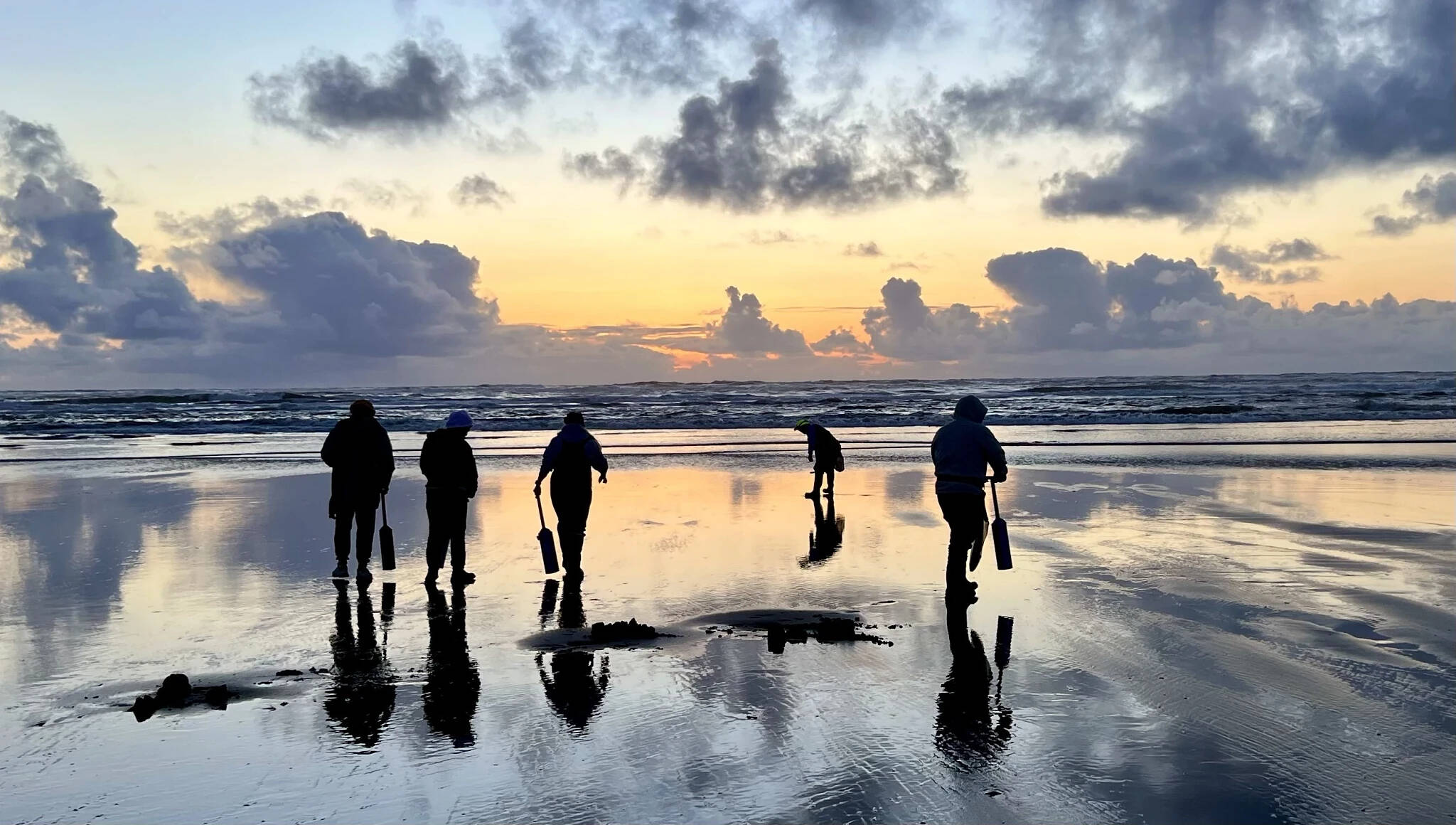Washington Department of Fish and Wildlife (WDFW) shellfish managers confirmed razor clam digging opportunities on four coastal beaches.
“With some of the lowest tides of the fall season and Thanksgiving just around the corner, this next tide series beginning Nov. 13 is your last and best chance to dig razor clams for the holiday dinner table,” said Bryce Blumenthal, a WDFW coastal shellfish biologist. “More tentative digs are also planned to begin the day after Thanksgiving for those who want to get outdoors and avoid the Black Friday mall madness.”
Not all coastal beaches are open for every dig, so diggers are encouraged to make sure their intended destination is open before heading out. No digging is allowed before noon during digs when low tide occurs in the afternoon or evening. Most successful digging occurs between one and two hours before the listed time of low tide.
The following digs during evening (p.m.) low tides will proceed as scheduled, after marine toxin results from the Washington Department of Health (DOH) showed razor clams are safe to eat:
Approved dates:
Nov. 13, Wednesday, 4:15 p.m.; -0.2 feet; Long Beach, Twin Harbors, Mocrocks
Nov. 14, Thursday, 5:02 p.m.; -1.1 feet; Long Beach, Twin Harbors, Mocrocks
Nov. 15, Friday, 5:48 p.m.; -1.7 feet; Long Beach, Twin Harbors, Copalis
Nov. 16, Saturday, 6:33 p.m.; -1.9 feet; Long Beach, Twin Harbors, Copalis
Nov. 17, Sunday, 7:19 p.m.; -1.8 feet; Long Beach, Twin Harbors, Mocrocks
Nov. 18, Monday, 8:05 p.m.; -1.3 feet; Long Beach, Twin Harbors, Mocrocks
Nov. 19, Tuesday, 8:54 p.m.; -0.7 feet; Long Beach, Twin Harbors, Copalis
Additional tentative dates:
Nov. 29, Friday, 5:20 p.m.; -0.1 feet; Long Beach, Twin Harbors, Mocrocks
Nov. 30, Saturday, 5:54 p.m.; -0.4 feet; Long Beach, Twin Harbors, Mocrocks
Dec. 1, Sunday, 6:30 p.m.; -0.6 feet; Long Beach, Twin Harbors, Copalis
Dec. 2, Monday, 7:06 p.m.; -0.7 feet; Long Beach, Twin Harbors, Copalis
Dec. 3, Tuesday, 7:46 p.m.; -0.6 feet; Long Beach, Twin Harbors, Mocrocks
Dec. 4, Wednesday, 8:28 p.m.; -0.5 feet; Long Beach, Twin Harbors, Mocrocks
Dec. 5, Thursday, 9:13 p.m.; -0.2 feet; Long Beach, Twin Harbors, Copalis
The DOH requires test samples for marine toxins, and domoic acid levels must fall under the guideline level before a beach can open for digging. Domoic acid, a natural toxin produced by certain types of marine algae, can be harmful or fatal if consumed in sufficient quantities. Final approval usually occurs about a week or less – sometimes two to three days – before the start of each digging series. More information about domoic acid, as well as current levels at ocean beaches, can be found on the WDFW’s domoic acid webpage.
On all open beaches, the daily limit is 15 clams per person. Each digger’s clams must be kept in a separate container, and all diggers must keep the first 15 clams they dig, regardless of size or condition, to prevent waste.
In fall the beaches still have a lot of sand built up, which can make beach driving hazardous. WDFW asks diggers to drive carefully on the uppermost part of the hard-packed sand, avoid wet sand and not to create congestion leading on and off the beach by parking on the approaches.
All diggers age 15 or older must have an applicable fishing license to harvest razor clams on any beach. Licenses can be purchased from WDFW’s licensing website, and from hundreds of license vendors around the state. WDFW recommends buying your license before visiting coastal beach communities.



